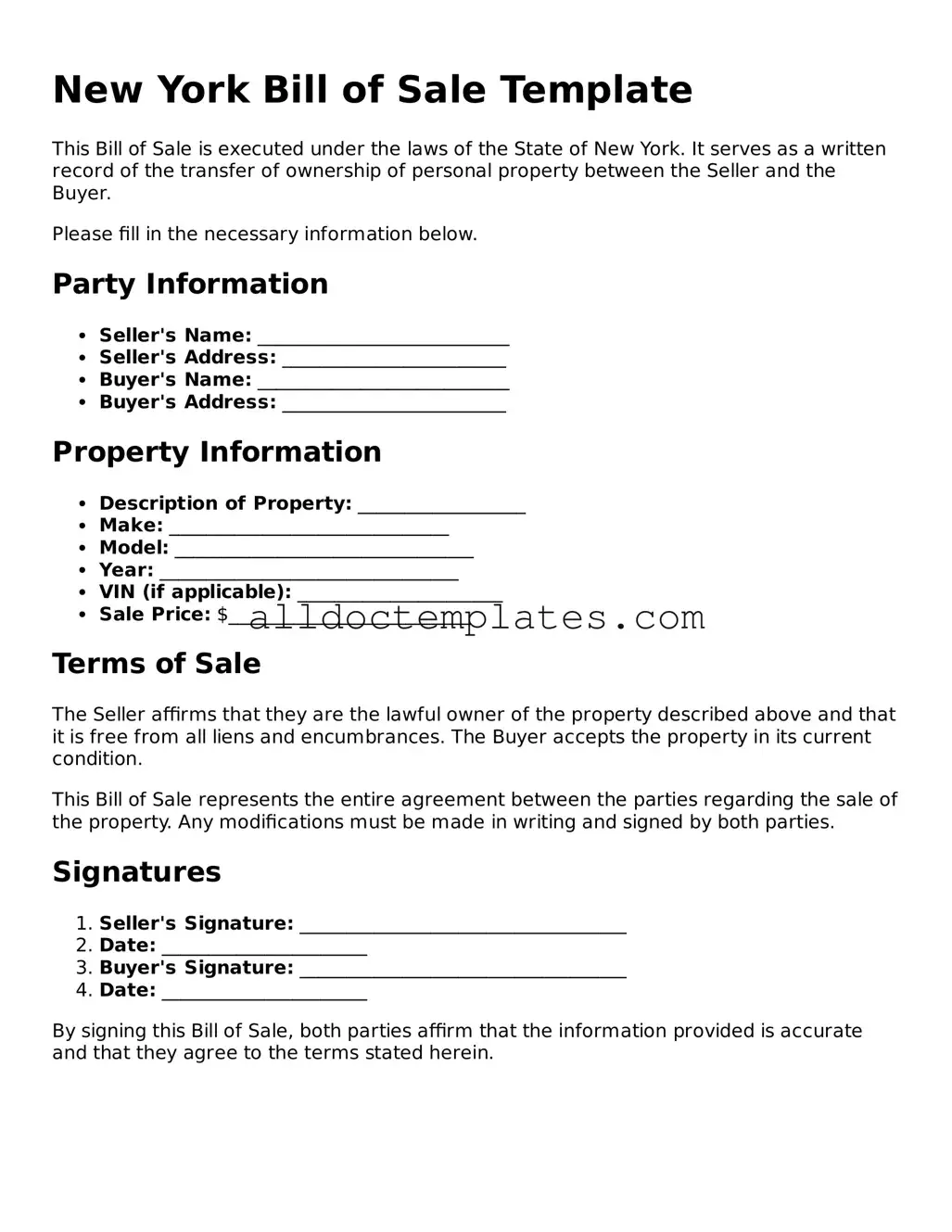New York Bill of Sale Template
This Bill of Sale is executed under the laws of the State of New York. It serves as a written record of the transfer of ownership of personal property between the Seller and the Buyer.
Please fill in the necessary information below.
Party Information
- Seller's Name: ___________________________
- Seller's Address: ________________________
- Buyer's Name: ___________________________
- Buyer's Address: ________________________
Property Information
- Description of Property: __________________
- Make: ______________________________
- Model: ________________________________
- Year: ________________________________
- VIN (if applicable): ______________________
- Sale Price: $__________________________
Terms of Sale
The Seller affirms that they are the lawful owner of the property described above and that it is free from all liens and encumbrances. The Buyer accepts the property in its current condition.
This Bill of Sale represents the entire agreement between the parties regarding the sale of the property. Any modifications must be made in writing and signed by both parties.
Signatures
- Seller's Signature: ___________________________________
- Date: ______________________
- Buyer's Signature: ___________________________________
- Date: ______________________
By signing this Bill of Sale, both parties affirm that the information provided is accurate and that they agree to the terms stated herein.
